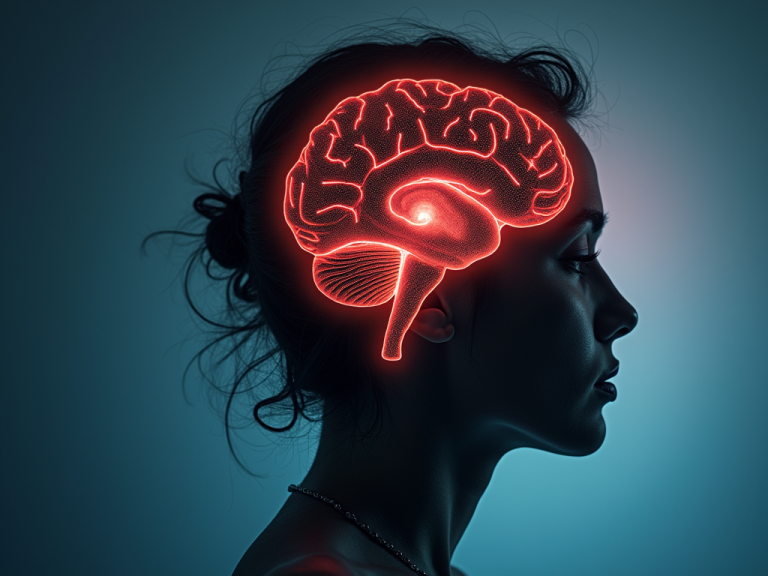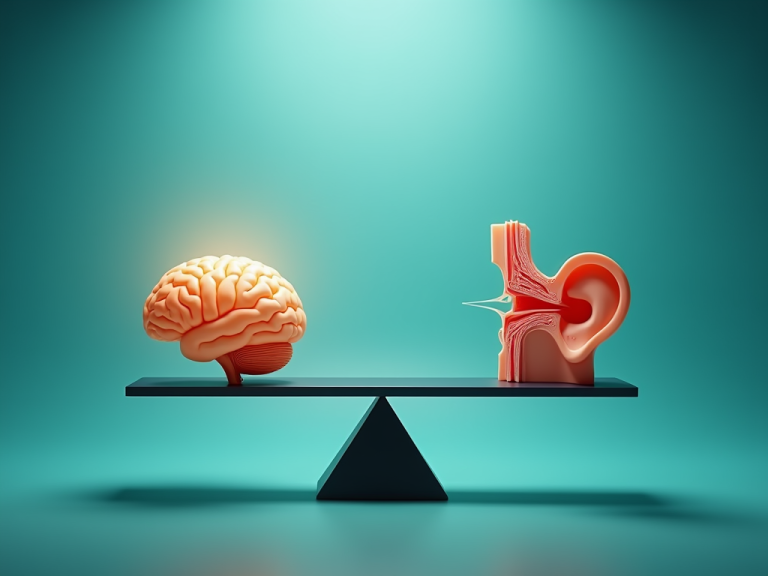Hi, I am Michael O’Brien (not my real name but I am Irish!) and this is my VAM story.
It was the mid-1990s. I was excited to be giving a paper at a prestigious scientific conference being held in Toronto. I went to bed early the night before and planned to get up around 5 a.m. for an early start and then drive to the conference center in Toronto. I got out of bed to go to the bathroom and get ready, but I did not turn on the light so as not to disturb my wife, who was still asleep. The next thing I knew, I fell hard to the floor, landing on my back. At the same time, I felt a sudden sickness in my stomach and my head was spinning. I tried to get up but fell again. My wife turned on the lights to see what had happened, revealing a crazy spinning room as I lay on my back looking at the ceiling. I had no idea what had just happened.
Needless to say, I did not drive to Toronto that day; I did not deliver my paper, and all I could do was lie very still in bed and watch the room spin. It took several days to recover. Each day, the vertigo—that is what this dizziness is called, a sort of drunken-like spinning and nausea (more on that later)—subsided.
After a few days, I was back at work, but more spinning episodes came about 10 days or two weeks apart. Fortunately, the severity seemed to lessen as time passed—kind of like a rubber ball thrown high into the air that keeps bouncing lower and lower until it finally stops. It took about six months for my “bouncing vertigo” to finally stop.
My family doctor sent me to an audiologist who arranged for me to get an MRI for a possible acoustic neuroma (a tumor on the acoustic nerve), but nothing out of the ordinary was found. So my condition went undiagnosed for a long time.
There seemed to be a pattern to the recurrence. Like the first episodes and the bouncing ball analogy, the vertigo seemed less severe with each passing year and, after five years, seemed to go away entirely. For about five years, vertigo was not an issue. Then around 2005, the vertigo episodes started again. None were ever as severe as the first one, so it seemed manageable—a huge annoyance but not as bad as some other cases I had heard about.
The same macro pattern seemed to repeat: five years of episodes followed by a few years of remission. When an episode was coming on (I could feel it starting), I would have to avoid driving, reading, or working on computers. I missed many days of work because of this.
Then the big one hit around 2015.
It was May. We had just attended an evening celebrating local foods and wines. Needless to say, I sampled every sort of dish: meats, cheese, wine, oysters, chocolate—it was fantastic! We thoroughly enjoyed it. We got home around 8 p.m., and I put my feet up and turned on some music. I fell asleep right away but woke up around 11 p.m. As soon as I moved my head, I was hit with violent vertigo—worse than my very first episode. I couldn’t move my head even half an inch without triggering violent spinning (this is called nystagmus—more on this later). I tried sitting on the floor; my wife brought me a bucket in case I got sick. Unable to move at all and staying completely still, I just barely managed to cope. The nystagmus (actual spinning like when you’re drunk) lasted maybe an hour; moving my head would restart it.
It took more than six months to fully recover from this event. I felt like I had a concussion—very tired—and couldn’t read or look at computers much at all. My balance was affected; walking on grass or uneven ground became challenging. I saw my family doctor and aggressively sought help in finding out what was going on. It occurred to me that if violent vertigo never went away, life would become unbearable. Fortunately, relief came when I saw a physiotherapist specializing in vertigo treatment who helped me retrain my brain to manage balance since my vestibular system had been damaged by each episode.
After about 18 years of going through these episodes, I finally received a diagnosis: Vestibular Associated Migraine (VAM). My family doctor explained that this is a type of migraine primarily affecting your vestibular system and balance without necessarily causing the classic headache associated with migraines. It’s essentially a storm in your head centered near your vestibular system.
He suggested going on a strict six-month diet eliminating as many dietary triggers as possible. So, I completely eliminated 25 foods from my diet—alcohol, chocolate, coffee, cheese—and reintroduced them one at a time to see if they triggered symptoms. During this time, I kept a diary of my symptoms and got serious about researching Vestibular Associated Migraine and how it could be managed. I tracked barometric pressure and temperature as possible triggers and scoured the internet for information about VAM triggers and treatments.
This journey inspired me to conduct research and share it through this website. Over time, I’ve learned how to monitor conditions and identify early symptoms of VAM attacks while finding ways to prevent or mitigate them using ibuprofen or Tylenol when needed. For example, while red wine used to be my drink of choice, I’ve completely eliminated it from my diet; now I enjoy half a glass of white wine once or twice a week—a drastic reduction compared to five years ago—and honestly I don’t miss alcohol anymore.
So that’s where things stand today: It has been thirty years since my first attack and over ten years since VAM was diagnosed as the cause. In this series of articles, I’ll share more about identifying early signs of attacks, preventing them over time, and how they’ve changed throughout my journey.
I am a retired scientist who knows how to conduct research; however, please note that this site only presents my personal story and findings based on my own experiences managing VAM attacks over decades. Nothing here should be taken as medical advice or scientific conclusions without consulting your doctor or conducting your own research into this condition.
I hope you find this information interesting—and perhaps even helpful—in your own journey.




